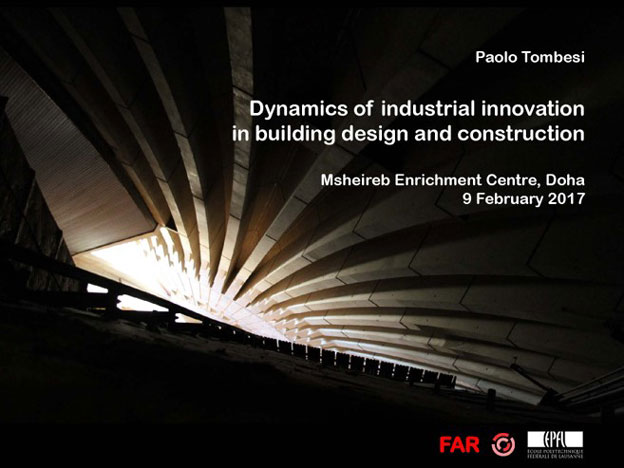
The term innovation describes a process of ‘marginal substitution’, whereby a specific task with defined objectives is carried out in a way that uses either a differently structured or a new combination of components, or alters tested procedures.
Innovation theorists tend to distinguish between the interests of the manufacturing sector in making new components available, and the interests of the construction industry in either adopting them or eliciting their development through the search for new solutions. In the first case, we speak of technology ‘push’ (into construction); in the latter of technology ‘pull’ (from within construction).
Depending on the sections of the construction industry and the powers held by the actors involved in them, the relationship between pushes and pulls works better along privileged ‘axes’, where the interests of product introducers and adopters can align.
Push-and-pull analysis helps making sense of the social determinants of building development and the positioning strategies of the players involved. If we can understand how the specific interests of different actors are leveraged over the building process in given industrial circumstances, we can also decipher and possibly design the operative conditions that are likely to determine preferred outcomes. Rather than hoping for things of a quality that will never eventuate by itself, we can take responsibility for the social engineering and investment required to make it happen.
Accordingly, push-and-pull readings of evolving building output can help define spaces for policy. Since the building industry does not provide the same level of means, motives and opportunities for beneficial technical change evenly across its sectors, we could exploit our ability to understand what makes a context conducive to particular strands of innovation, and assign products in that context explicit ‘industrial development’ responsibilities. Building products developed in suitable sectors could be targeted to act indirectly as Trojan horses for horizontal product innovation in other sectors, so as to reduce their built-in development marginal costs or adoption risk.

Link image (previous page): Qatar harbour, TOMBESI (2018); bottom images: design and building tools, TOMBESI (2018)